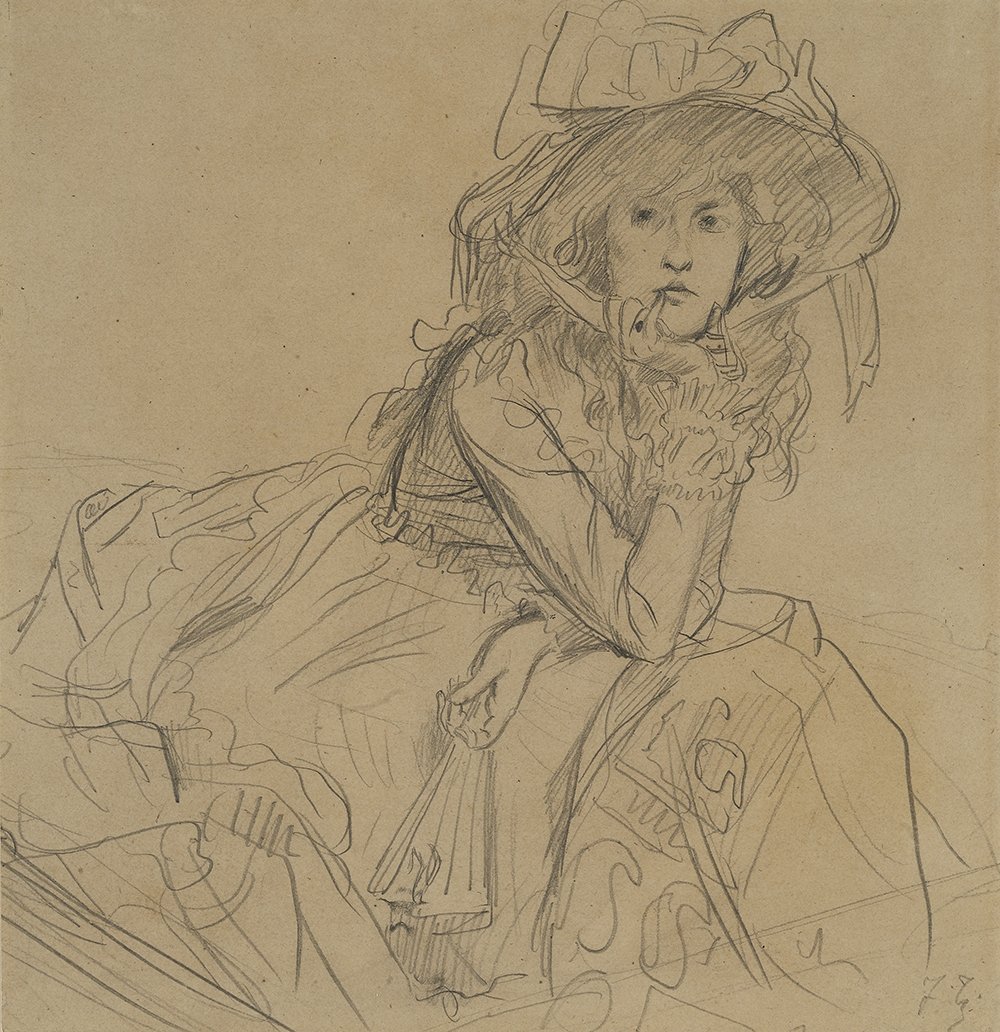 Dante Gabriel Rossetti, St George and Princess Sabra, 1862, watercolour
Dante Gabriel Rossetti, St George and Princess Sabra, 1862, watercolour
The tale of the knight St George slaying the dragon and saving the princess was a popular artistic motif for the painters in the Medieval and Renaissance times. In the nineteenth century the Pre-Raphaelites such as Dante Gabriel Rossetti and Edward Burne-Jones revived the motif. It is easy to see why the motif would appeal to the Pre-Raphaelites; it is a tale of chivalry, of a victory of good over evil, tale that ends in love. The awakening of love can be seen in Rossetti’s 1862 watercolour “St George and Princess Sabra”.
The painting shows a celebration after the quest is done and the dragon slayed, but Rossetti placed the focus not on the town’s celebration, seen in the upper left corner through a window, but on the figures of St George and Princess Sabra. The Princess had brought his helmet, turned upside down, filled with water so he can wash his bloodied hands in it but really she is using the kind gesture as an opportunity to be closer to the handsome knight. Her long red hair is cascading down her back like flames and her lips are pressed against his hands. She is grateful to be saved from the dragon, but is it just the appropriate gratefulness, or something more in her big love-starved eyes? But the sturdy, strong, bearded George is looking out at the window; is he feeling uneasy with the lady’s display of affection, or is he thinking more about his wordly duties, his place in society, his spiritual purpose, which are all perhaps more important to him than love. Both the chamber and their garments are painted in rich jewel colours of amber, garnet and emerald, as if the entire scene is bathed in the golden rays of sun falling through the opulent stained glass windows.
Interestingly, the model for the Princess was Rossetti’s own wife Elizabeth Siddal. There is Siddal’s recognisable long, flowing coppery-red hair and the facial features that we find often in Rossetti’s art. But more disturbingly, only days after posing for this painting Elizabeth was found dead, overdosing on laudanum, on the 11th February 1862. There is definitely a richness and a sensuality in Rossetti’s watercolour which we don’t find in the Medieval depictions of the same motif, and not even in Burne-Jones’ paintings of the motif. In a well-known example by Paolo Uccello, the Princess is portrayed as a lean, pale, iron-deficient damsel who is completely calmly watching St George as he is slaying the dragon. She appears so calm that her heart probably didn’t skip a beat. In comparison, the heart of the Princess in Rossetti’s watercolour is skipping a beat many many times when she is kneeling down so close to St George who, I must add, also appears more strong and masculine than the one depited in Uccello’s painting.

Paolo Uccello, St George and the Dragon, c 1460






































